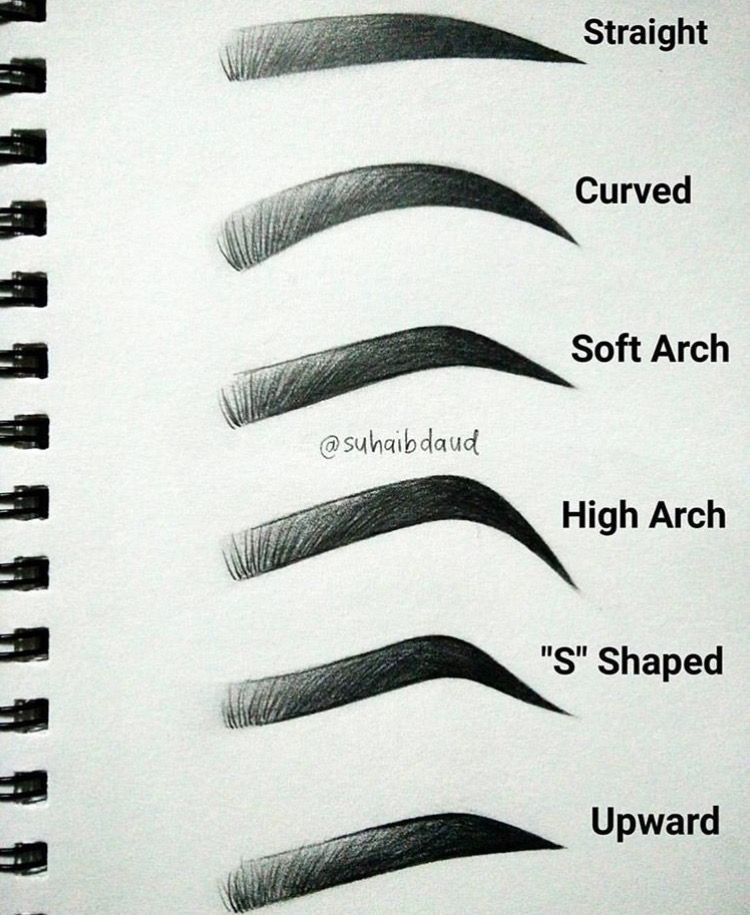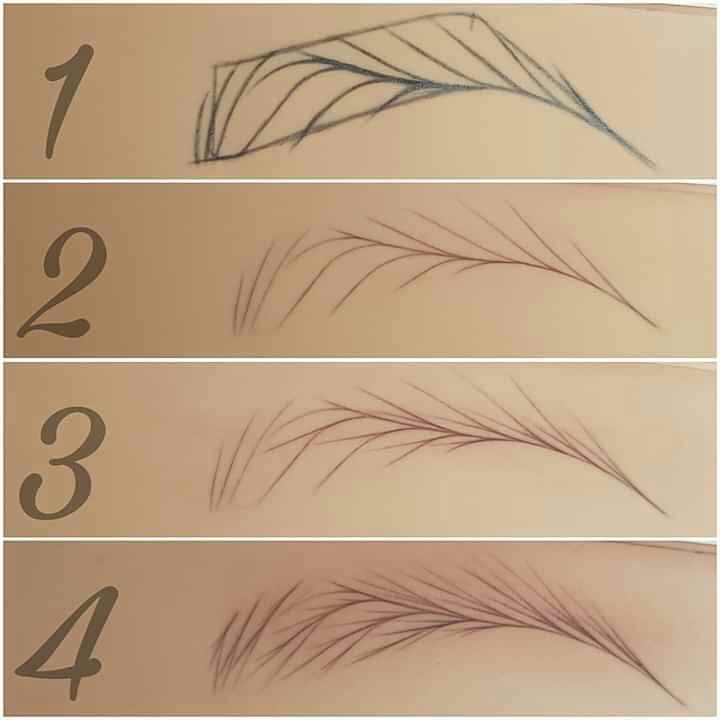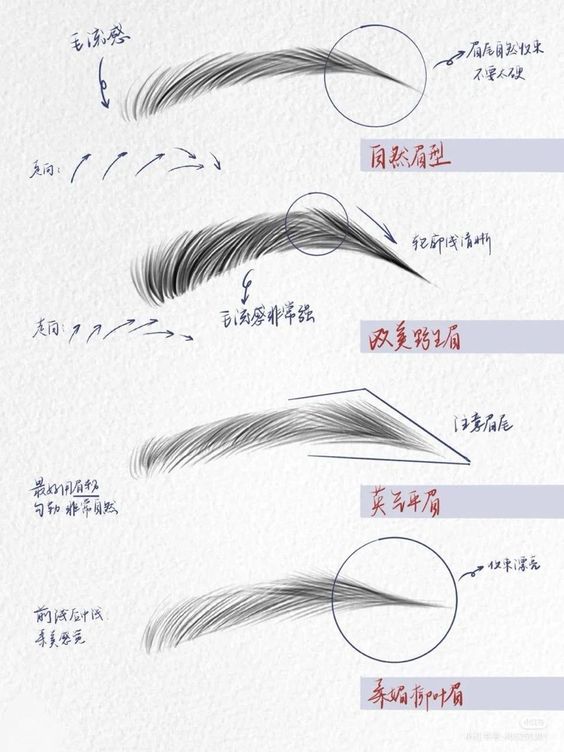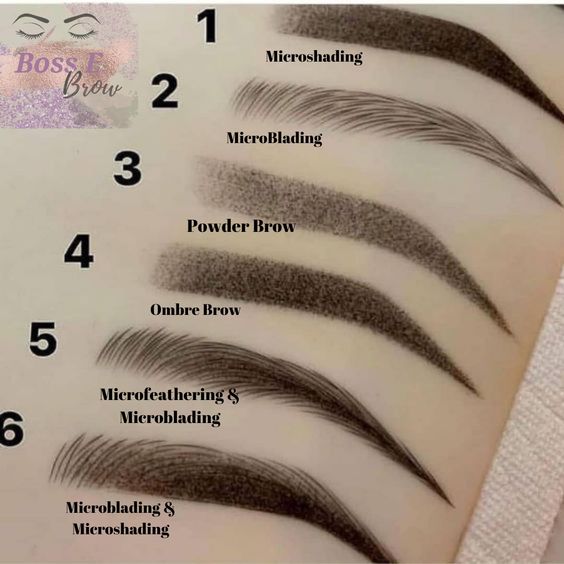Drawing eyebrows is an essential part of any makeup routine. Eyebrows frame the face and can completely change one’s appearance. However, not everyone is born with perfectly shaped eyebrows, and that’s where drawing eyebrows comes in.


Drawing eyebrows can be intimidating, especially for beginners. There are various techniques and products available in the market, and it can be overwhelming to choose the right one. However, with a little bit of practice and the right tools, anyone can master the art of drawing eyebrows.
In this tutorial, we will guide you through the process of drawing eyebrows step-by-step. From choosing the right product to shaping and filling in the eyebrows, we will cover everything you need to know to achieve perfectly groomed eyebrows. So, whether you have sparse eyebrows or want to change the shape of your eyebrows, this tutorial will help you achieve your desired look.
Understanding Eyebrow Anatomy
Hair Growth and Patterns


Eyebrow hair grows in a specific pattern that is unique to each individual. The hair grows in the direction that it is genetically programmed to grow. The hair on the inner part of the eyebrow grows upward, while the hair on the outer part of the eyebrow grows outward. The hair on the top of the eyebrow grows downward, while the hair on the bottom of the eyebrow grows upward.
It is important to understand the hair growth pattern of the eyebrows in order to properly shape them. Shaping the eyebrows against their natural growth pattern can result in an unnatural and unflattering look.
Different Eyebrow Shapes
There are various eyebrow shapes that can enhance the natural beauty of the face. The shape of the eyebrows should complement the natural shape of the face. For example, a round face looks best with eyebrows that are angled and elongated, while a square face looks best with eyebrows that are soft and rounded.


The most common eyebrow shapes include the arched eyebrow, the straight eyebrow, and the curved eyebrow. The arched eyebrow is the most popular shape and is characterized by a high arch that is located above the iris. The straight eyebrow is characterized by a straight line that runs from the beginning of the eyebrow to the end. The curved eyebrow is characterized by a gentle curve that follows the natural shape of the eyebrow.
When selecting the perfect eyebrow shape, it’s worth considering both your daily makeup routine and any semi-permanent options you might explore.
Microblading artists at Pretty Please Studio recommend choosing a shape that not only complements your face but also works with your lifestyle and maintenance preferences. Their clients often discover that a customized approach—blending elements of traditional shapes like the soft arch or straight brow—creates the most natural-looking results that enhance facial symmetry and expression.
It is important to choose an eyebrow shape that complements the natural shape of the face and enhances its beauty.
Materials and Tools
Choosing the Right Pencil
When it comes to drawing eyebrows, selecting the right pencil is crucial. The most common types of pencils used for this purpose are eyebrow pencils and graphite pencils. Eyebrow pencils are specifically designed for filling in and defining eyebrows, while graphite pencils are typically used for sketching and drawing.


Eyebrow pencils are available in a range of shades to match different hair colors. It is important to choose a shade that closely matches the natural color of the eyebrows for a more natural look. For those with lighter hair, a shade lighter than the natural color may be used, while those with darker hair may opt for a slightly darker shade.
Graphite pencils, on the other hand, are available in different grades of hardness, ranging from 9H (hardest) to 9B (softest). For eyebrow drawing, a 2B or 4B pencil is ideal as it provides a balance between hardness and softness.
Using a Spoolie Brush
A spoolie brush is an essential tool for blending and shaping the eyebrows. It is typically used after applying the pencil to soften the lines and create a more natural look. The brush can also be used to groom the eyebrows and remove any excess product.
To use a spoolie brush, simply brush the hairs upwards and outwards, following the natural shape of the eyebrows. Use light strokes to blend the product and create a more natural look.
Additional Tools for Precision
For those who want to achieve a more precise and defined look, additional tools such as angled brushes, brow gels, powders, and pomades may be used.
Angled brushes are used to apply brow powder or pomade to fill in any gaps or sparse areas in the eyebrows. Brow gels are used to set the eyebrows in place and provide a more polished look. Powders can be used to create a softer, more natural look, while pomades are ideal for a more defined and dramatic look.
Overall, choosing the right materials and tools is essential for achieving the desired eyebrow look. With the right products and techniques, anyone can achieve perfectly groomed and defined eyebrows.
Basic Techniques
Creating the Outline


The first step in drawing eyebrows is to create an outline of the desired shape. This can be done using a brow pencil or a fine-tip brush and brow pomade. It’s important to start with a light hand and build up the shape gradually to avoid any mistakes. The outline should follow the natural shape of the brow and be symmetrical on both sides.
Filling and Shading
Once the outline is complete, the next step is to fill in the brow with a brow powder or pencil. It’s important to use light, feathery strokes to mimic the look of natural eyebrow hairs. The intensity of the filling can be adjusted depending on the desired look. For a more natural look, use a lighter hand and for a more dramatic look, apply more pressure.


Shading can also be added to create a more three-dimensional effect. This can be done using a slightly darker shade of brow powder or pencil and applying it to the areas where the brow hair is naturally darker. Again, it’s important to use light, feathery strokes to avoid a harsh look.
Drawing Individual Hairs
To make the eyebrows look more realistic, individual hairs can be drawn using a fine-tip brush and brow pomade. This technique is especially useful for those with sparse eyebrows or gaps in their natural brow shape. The individual hairs should be drawn in the same direction as the natural hair growth and should be spaced out to avoid a crowded look.


Overall, drawing eyebrows requires a light hand and attention to detail. By following these basic techniques, anyone can achieve a natural and polished look.
Step-by-Step Tutorial
Starting with the Basics
To start drawing eyebrows, it is important to have the right tools. A fine-tip eyebrow pencil or a brow powder and angled brush are recommended. Begin by brushing the brows upwards with a spoolie brush. Then, use the pencil or powder to lightly fill in any sparse areas, starting from the inner corner and working outwards.


Next, define the shape of the brow. The starting point should align with the inner corner of the eye, the arch should be above the outer edge of the iris, and the end should be in line with the outer corner of the eye. Use short, upward strokes to mimic the look of natural hairs.
Defining the Arch
To create a defined arch, use a slightly darker shade of pencil or powder and draw a diagonal line from the outer edge of the nostril to the outer edge of the iris. This will mark where the arch should be placed. Then, use short, upward strokes to fill in the area above the arch, blending it into the rest of the brow.
Refining and Perfecting
To refine and perfect the brows, use a concealer or highlighter to clean up any mistakes or stray hairs. Apply it along the bottom and top edges of the brow, blending it out with a brush or sponge. This will create a clean, polished look.


Finally, set the brows in place with a clear or tinted brow gel. This will keep the hairs in place throughout the day and add a finishing touch to the overall look.
With this step-by-step tutorial, beginners can easily learn how to draw eyebrows. By following these simple steps, anyone can achieve a natural, defined brow that complements their features.
Advanced Techniques
Creating Texture and Depth
To create a more natural look, advanced eyebrow artists use techniques to add texture and depth to the brows. One way to do this is by using a brow powder or pencil to create small, hair-like strokes. This technique is called “feathering” and can create a more natural-looking brow.
Another way to add texture and depth is by using a highlighter or a light-colored eyeshadow to highlight the brow bone. This can make the brows appear more lifted and defined.
Correcting Mistakes
Even the most experienced eyebrow artists make mistakes. To correct mistakes, a kneaded eraser can be used to gently remove excess product or to reshape the brow. It’s important to be patient and precise when correcting mistakes to avoid over-correcting and making the problem worse.
Adding Finishing Touches
To complete the look, advanced eyebrow artists use finishing touches such as brow gel or clear mascara to set the brows in place. This can help the brows stay in shape throughout the day.
Overall, advanced eyebrow techniques require patience, precision, and a steady hand. With practice, anyone can achieve a natural-looking, well-defined brow.
Practice and Patience
Drawing eyebrows requires practice and patience. It takes time to develop the skill necessary to create well-drawn eyebrows that complement the individual’s eye expressions and character.
One of the most important things to keep in mind when practicing drawing eyebrows is to start with light strokes and gradually build up the intensity. This will help to avoid mistakes and allow for corrections to be made before the eyebrow becomes too dark or thick.


It is also important to consider the shape of the eyebrow and how it complements the individual’s face. Different eye expressions and character traits may require different eyebrow shapes. Experimenting with different shapes and styles can help to find the perfect fit.
Patience is key when it comes to drawing eyebrows. It may take several attempts to get the desired look, and it is important not to get discouraged. With practice comes improvement, and eventually, the individual will be able to create well-drawn eyebrows with ease.
Also in fall season – Clown Makeup Tutorial: Transform into a captivating clown this Halloween with white foundation, bold lines, and vivid colors
Overall, drawing eyebrows requires a combination of practice, patience, and attention to detail. With time and dedication, anyone can achieve the perfect eyebrow look that complements their eye expressions and character.
Final Touches with Makeup
Using Concealer for Definition
After filling in the eyebrows, some makeup artists prefer to use concealer to define the shape further. This technique works especially well for those with sparse eyebrows or uneven growth. To use concealer for definition, apply a small amount of concealer around the edges of the eyebrows using a small brush or applicator. Use a shade that is one to two shades lighter than your skin tone for a natural look.
Applying Brow Gel for Hold
Once the eyebrows are filled in and defined, it’s important to set them in place with a brow gel. Brow gel helps to hold the hairs in place and prevent smudging throughout the day. To apply brow gel, use the applicator brush to comb the gel through the eyebrows in an upward and outward motion. Choose a shade that matches your eyebrow color for a natural look.
Highlighting Under the Brow
To add a final touch to the eyebrows, some makeup artists like to highlight under the brow bone. This technique helps to lift the eyebrows and create a more defined look. To highlight under the brow, use a highlighter or light-colored eyeshadow and apply it just under the brow bone using a small brush. Blend well for a natural look.
Overall, these final touches with makeup can help to enhance the look of your eyebrows and create a polished finish. Using concealer for definition, applying brow gel for hold, and highlighting under the brow are simple techniques that can be done with a few basic eyebrow products, such as brow pomade and a small brush.
- 3.6Kshares
- Facebook0
- Pinterest3.6K
- Twitter0


